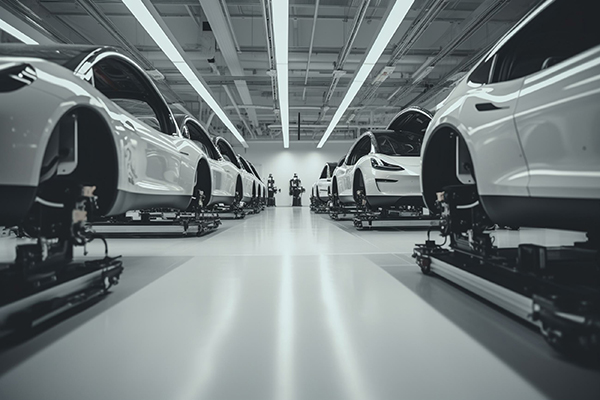
Adams touched on how the robocars industry is completely bombed at the moment. "Apple just canceled plans for EVs. Volvo has shifted away from EV design and manufacturing," he said. "Other car companies that are making EVs are realizing they can't really sell them. Dealers don't like them. Also, they're expensive to insure and the insurance companies don't want to insure them. They are also hard to repair and it takes hours to charge them." (Related: New study: Charging an EV is equivalent to filling up a traditional car with gasoline worth $17.33 per gallon.)
Rubino agreed and said that yes, at first, drivers find them so much fun to drive. "But then, you have one of those cars for two years and their batteries start to wear out."
"You'll find out you have to spend $40,000 to get a new battery pack, which with an internal combustion car, the same amount is 20 years of maintenance, if not more," he said. The analyst furthermore expressed that he'll "go out on a limb" with EVs and say they still do have a future but only if they will be driven by hydrogen fuel cells, simply because they don't have to be replaced.
"At night when that power is not needed, it could be used to make hydrogen for fuel cells," he suggested. "And that's the next generation of electric cars without a lot of flaws and that's a much cleaner process than having thousands of 10-year-old kids working in lithium mines and cobalt mines."
Adams appeared interested but raised a concern – the formulation of the hydrogen fuel cell tech is not well commercialized at scale yet.
"That sounds like a decade-long project to do. But I love the fact that it would release us from the ties to dirty lithium and cobalt mining, especially in a lot of not-so-politically stable countries, where that's taking place. And also all the water usage that's used for lithium mining is destroying water resources in a lot of these countries, which is affecting food and farming," he said. "But you're still going to need energy to generate the hydrogen or to separate it, the machine is going to be powered by something, probably fossil fuels or natural gas."
Rubino agreed and volunteered solar panels as a source of energy for the separator, especially for those who live in Arizona. "There are places where you could do it with solar because there's so much extra sunlight you can't use it all in the daytime. So, you have this excess power that's essentially kind of sort of free,” he said, adding that he still believes nuclear technology could be the best baseline power. Plus it is extremely cheap when run continuously.
EVs may work better with nuclear power
At this point in the show, Adams pulled up the Westinghouse nuclear fuel website, wherein it indicated that the safe, innovative nuclear technology supplier has been developing the eVinci Microreactor, a next-generation, micro-modular reactor for decentralized remote applications.
"The microreactor’s innovative design combines new technologies with 60-plus years of commercial nuclear design and engineering, creating a cost-competitive and resilient source of power with superior reliability and minimal maintenance. Its small size allows for transportability and rapid, on-site deployment in contrast to plants requiring large amounts of construction. eVinci can produce 5MWe with a 13MWth core design. The reactor core is designed to run for eight or more full-power years before refueling," the website included.
"This microreactor fits in the space of a garage. And I remember that you have to swap out the fuel, here it is eight or more full-power years before refueling. So basically, you would get fuel rods from Westinghouse. It produces a certain number of megawatts ongoing continuously for eight years and then you have to swap out the fuel," Adams said. "This technology exists right now. It's not for home use yet, but why aren't we using this, anyway?"
According to Rubino, it may have something to do with the nuclear accident at the Fukushima Daiichi nuclear power plant in 2011.
"That's the big risk with nuclear. Every 15 years, some plant melts down somewhere. And then people are freaked out about radiation for such a long time that all the new plants get delayed and the existing ones get mothballed. So, the huge risk hanging over nuclear is another Fukushima. And, you know, it's hard to say that that won't happen. But it could be that if we become rational about energy and see the flaws of all the other energy sources that we accept that risk and go forward with nuclear and then and then there's a lot of innovation coming out there," he said.
Check out RoboCars.news for more stories related to the government's push to shift to electric vehicles.
Watch the full episode of the "Health Ranger Report" with Mike Adams featuring John Rubino below.
This video is from the Health Ranger Report channel on Brighteon.com.
More related stories:
Apple bails out of EV market and shifts focus to AI.
Internal report finds Ford can increase its profits by up to 50% if it stops selling EVs.
General Motors to bring back plug-in hybrids as EV market falters.
Sources include:
Please contact us for more information.
















